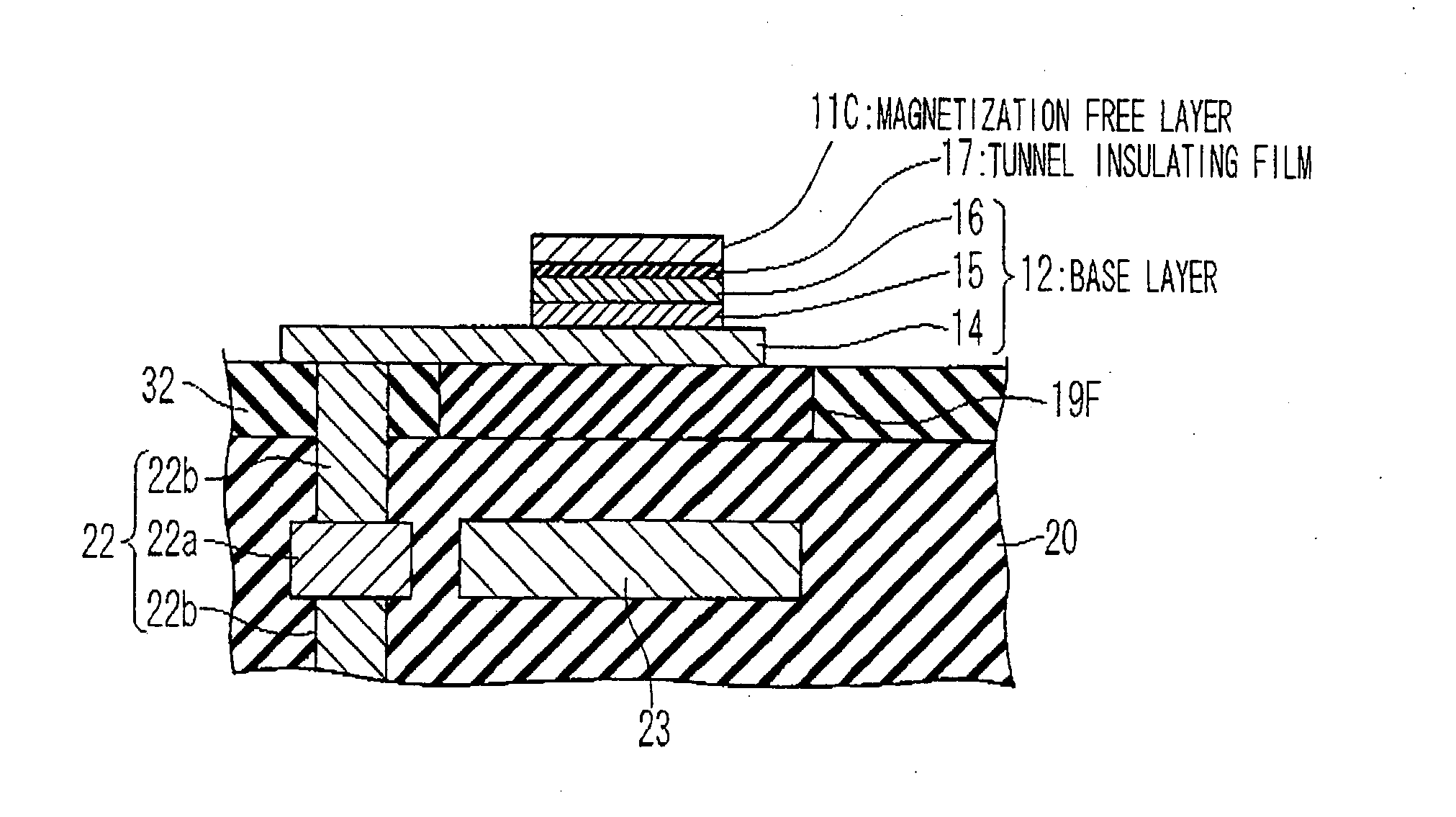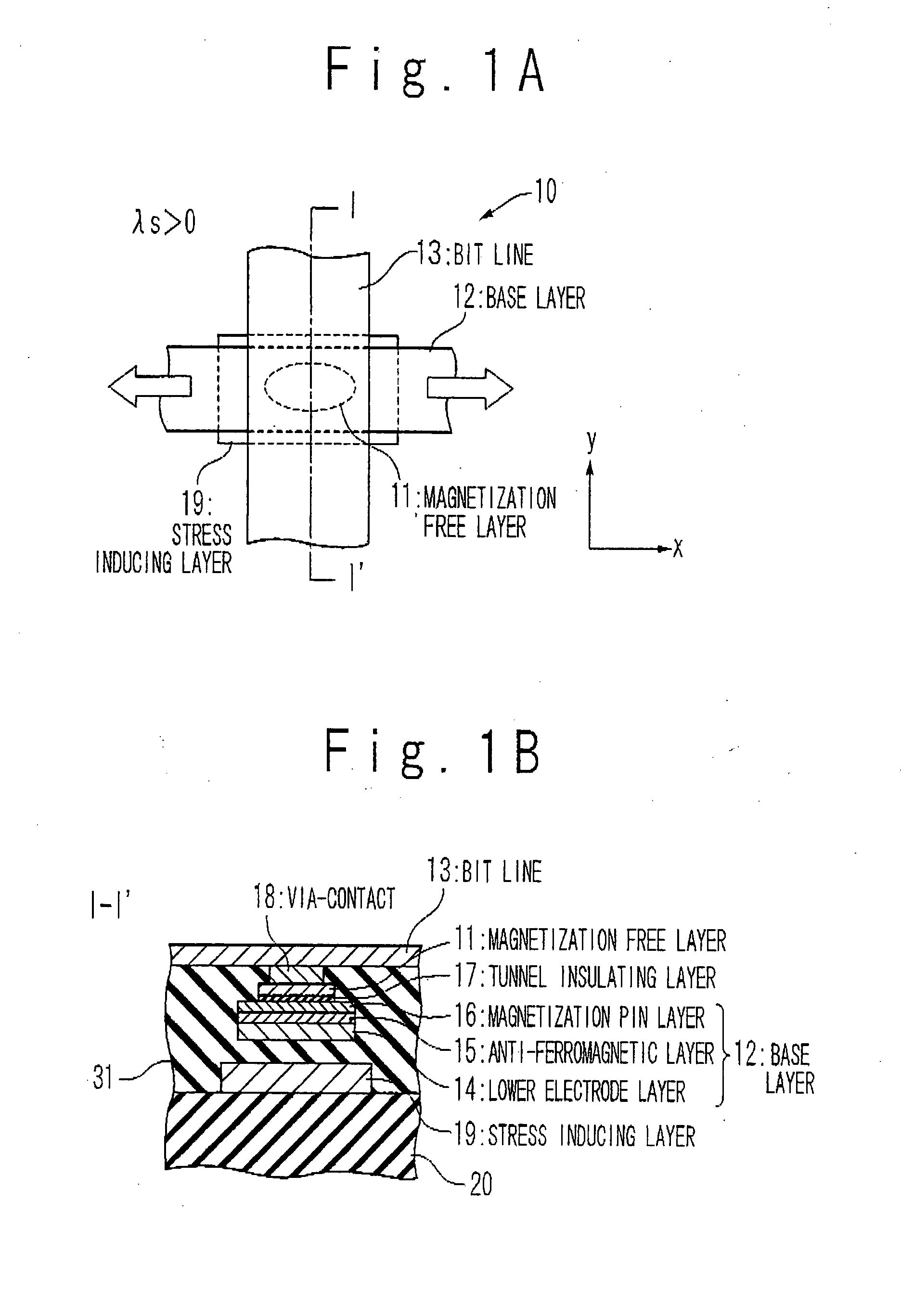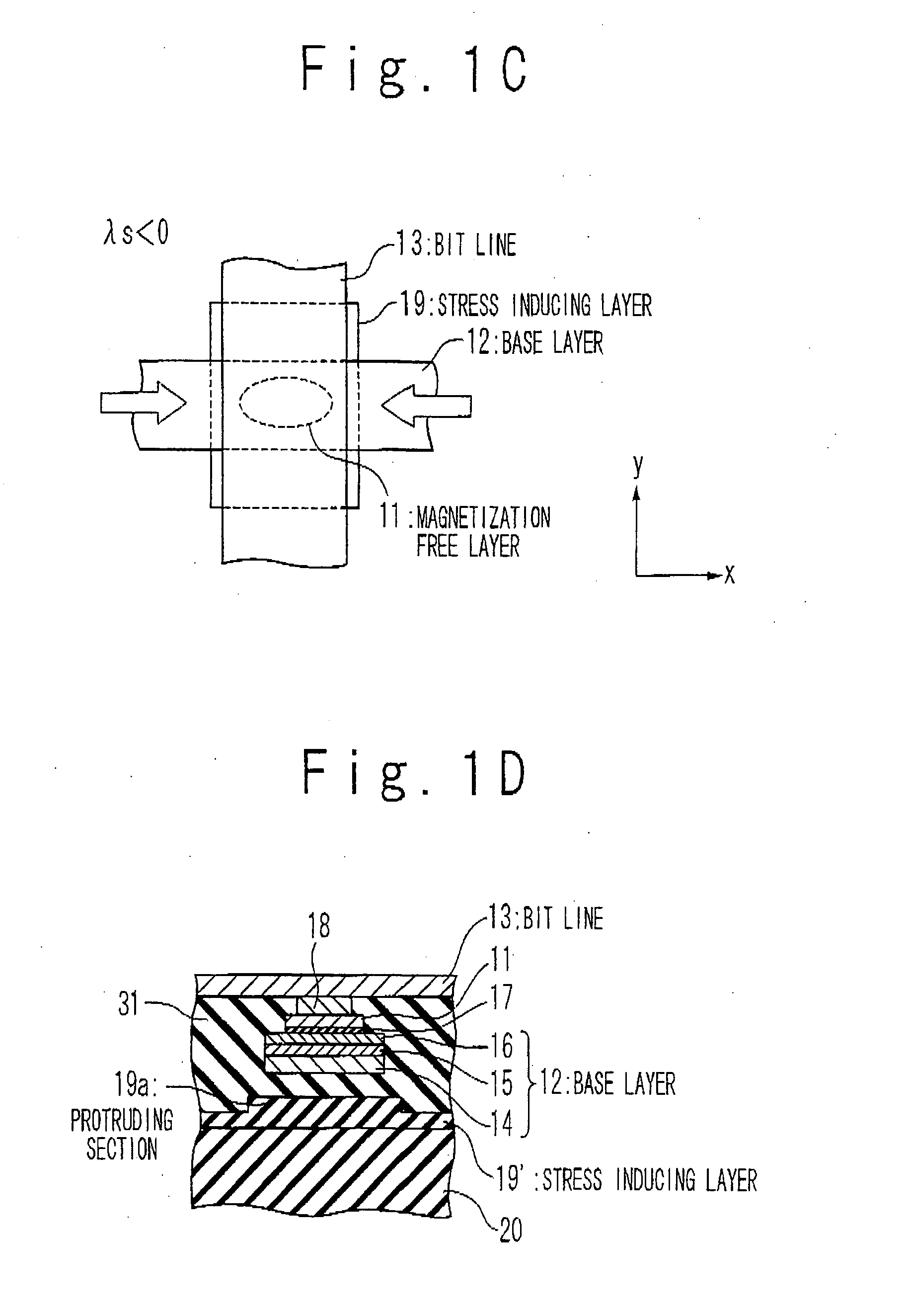Magnetic Memory and Manufacturing Method For the Same
a technology of magnetic memory and manufacturing method, which is applied in the field of magnetic memory, can solve the problems of increasing the aspect ratio inconvenient operation of the magnetic memory, and data is erroneously written, and achieves the effect of suppressing the variation in the switching field of the magnetization free layer
- Summary
- Abstract
- Description
- Claims
- Application Information
AI Technical Summary
Benefits of technology
Problems solved by technology
Method used
Image
Examples
first embodiment
[0097]FIG. 1A is a plan view showing a configuration of a magnetic memory cell 10 of the magnetic memory according to the first embodiment of the present invention. As shown in FIG. 1A, the magnetic memory cell 10 is formed as a cross point memory array, and specifically, a memory cell contains a magnetization free layer 11 for holding a data, a base layer 12 functioning as a word line, and a bit line 13. The magnetization free layer 11 has a shape that is long in the x-axis direction, and its shape magnetic anisotropy is oriented to the x-axis direction. The base layer 12 is provided to extend in the x-axis direction, and the bit line 13 is provided to extend in the y-axis direction. The data write into the magnetization free layer 11 is performed by supplying a write current to the base layer 12 and the bit line 13.
[0098]As shown in FIG. 1B, the base layer 12 includes a lower electrode layer 14, an anti-ferromagnetic layer 15 and a magnetization pinned layer 16. The anti-ferromagn...
second embodiment
[0130]The base layer serving as a lower layer for the magnetization free layer and the tunnel insulating layer can be used as the stress inducing structure for applying the stress to the magnetization free layer, through suitable selection of its inner stress and shape. The discussion with regard to the inner stress and shape of the stress inducing layer and the direction of the stress applied to the magnetization free layer can be applied to the base layer as it is. For example, when the base layer is formed such that its inner stress is compression stress and its shape is long in the y-axis direction, the tensile stress can be applied to the magnetization free layer in the x-axis direction. The second embodiment provides the structure of the magnetic memory in which the base layer is used as the stress inducing structure.
[0131]FIG. 10A is a plan view showing an example of the structure of a memory cell 10D of the magnetic memory according to the second embodiment, and FIG. 10B is ...
third embodiment
[0140]Even the wiring located lower than the base layer (namely, the wiring located between the base layer and the substrate) can be used as the stress inducing structure to apply the stress to the magnetization free layer, by suitably selecting the extension direction. As mentioned above, according to the experiment by the inventor, the wiring arranged between the base layer and the substrate applies the tensile stress to the magnetization free layer in the same direction as the extension direction of the wiring and applies the compression stress to the magnetization free layer in the direction orthogonal to the extension direction of the wiring. Using such a phenomenon, the wiring located lower than the base layer can be used as the stress inducing structure. The third embodiment provides the structure of the magnetic memory in which the wiring located lower than the base layer is used as the stress inducing structure.
[0141]FIG. 14A is a plan view showing an example of the structu...
PUM
 Login to View More
Login to View More Abstract
Description
Claims
Application Information
 Login to View More
Login to View More - R&D
- Intellectual Property
- Life Sciences
- Materials
- Tech Scout
- Unparalleled Data Quality
- Higher Quality Content
- 60% Fewer Hallucinations
Browse by: Latest US Patents, China's latest patents, Technical Efficacy Thesaurus, Application Domain, Technology Topic, Popular Technical Reports.
© 2025 PatSnap. All rights reserved.Legal|Privacy policy|Modern Slavery Act Transparency Statement|Sitemap|About US| Contact US: help@patsnap.com



